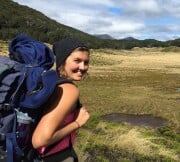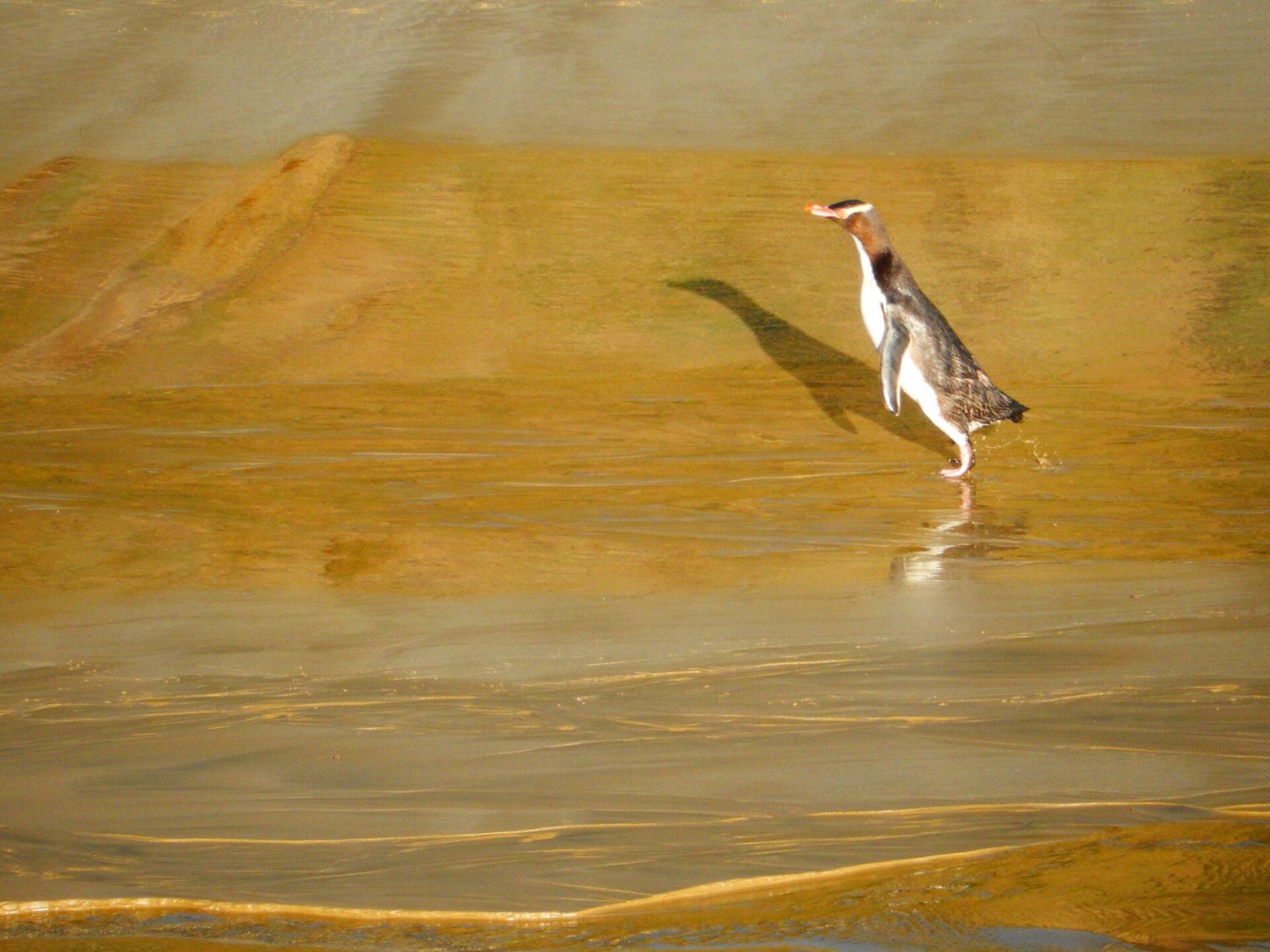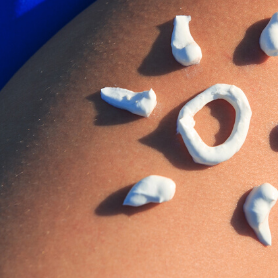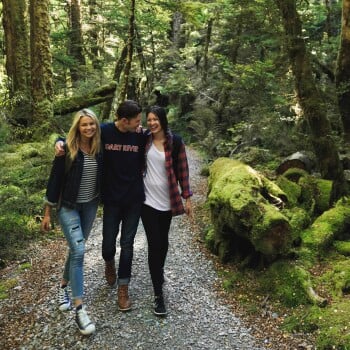- About Us
-
Trips
-
 Kiwi-Style Hiking
Kiwi-Style Hiking
-
 Great Walks
Great Walks
-
 Hiking Tours
Hiking Tours
-
Alpine Hikes
-
Custom Groups
- Huayhuash Trek
- Family Northern Explorer
- Family Southern Explorer
- Lake Waikaremoana Hike
- Women's Custom Tours
- Women's Southern Wilderness
- Coast, Canyons and Mountains
- Coastal Wanderer Custom Tour
- Don't Cross the Ladies
- Secret South Custom Tour
- Tekapo Hike
- West Coast Custom Tour
- World Heritage Custom Tour
-
- Blog
- Shortlist
- About Us
- Trips
- Blog
- Shortlist

Sep 9, 2014
Hiking New Zealand uses its wildlife fund to support Penguins Plus
It is a little known fact that blue penguins wear headlamps so they can find their burrows at night. Hang on a minute. I think I might have got that wrong. Let’s Wikipedia that… How about we try that opening statement again? Penguin researchers wear headlamps so they can find the burrows of little blue penguins at night.
The little blue penguin is the world’s smallest penguin and is only found around New Zealand’s coastline and in southern Australia. In the Bay of Plenty region on the east coast of the North Island Julia Graham of Penguins Plus is doing research and helping to bring information to the public about these feisty birds.
It has been a genuine pleasure for Hiking New Zealand to be able to donate money from our Wildlife Fund to Penguins Plus, a grassroots community project that runs on the smell of penguin poop and the generosity of penguin enthusiasts like Julia.
The Wildlife Fund at Hiking New Zealand was set up to contribute to the wildlife research being done by various organisations around New Zealand. Our interesting wildlife and our knowledge of it makes for a richer travel experience for our clients who come hiking in New Zealand’s wilderness areas. $5 from each safari client goes into the Wildlife Fund – for that we thank you!
Julia from Penguins Plus approached us with urgency for a donation of headlamps. She has an increasing number of volunteers helping her out and the torches are extremely important, especially as the little penguins head into breeding season. She had a particular sturdy product in mind. We can only imagine that a penguin disturbed at night might use the headlamps for boxing practice.
The donation of headlamps follows up a previous cash donation that Julia used to buy a burrow cam (a camera used to see inside penguin burrows). The burrow cam can be connected to a laptop or iPad/iPhone so can be used in the field and isolated places. Julia uses it to look inside all of the burrows that she has been unable to see in to before, to determine if it is a breeding burrow or a bachelor pad. This helps give a more accurate population count. In the future the burrow cam could be a cool little draw card to interest tourists (along with the trail cameras that are on Julia’s wish list).
We look forward to being able to support more of the fine work of Penguins Plus in future, and to hearing some of their funny penguin tales. It’s good to know that penguins have excellent night vision, but that their human researchers can benefit from having some lights on their heads.
Response from Penguins Plus:
“The Mount Penguin Monitoring team would like to give a HUGE thanks to Hiking New Zealand for their recent donation of ten high quality head torches. These torches were desperately needed for the weekly monitoring of little blue penguin colonies in Mount Maunganui, Bay of Plenty. These colonies were affected by the Rena oil spill in 2011 and the monitoring is part of ongoing research into the impacts of the oil spill on these wonderful birds.”








